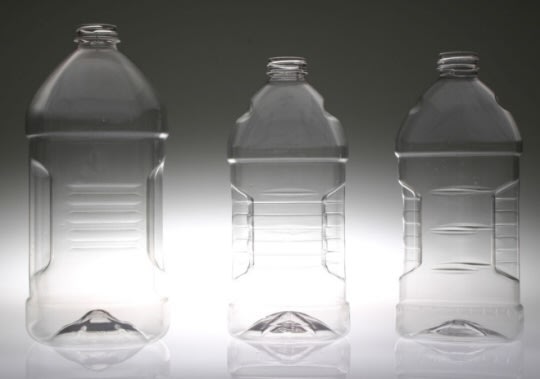 Container weight is a crucial factor in the packaging of many products as it greatly influences both logistic aspects and consumer habits. Compared to traditional materials such as glass and metal, the use of plastics has brought about a large reduction in packaging weight.
Container weight is a crucial factor in the packaging of many products as it greatly influences both logistic aspects and consumer habits. Compared to traditional materials such as glass and metal, the use of plastics has brought about a large reduction in packaging weight.PET packaging, widely used in the packaging of carbonated drinks, water and oil as well as in cosmetics and cleaning products, offer the greatest relative reduction in weight compared to other plastics.
Optimising the weight of PET packaging is an integral part of the PET production process by blow moulding where a previously injected PET pre-form is bi-orientated lengthwise and width-wise to fit the mould of the finished packaging.

The tendency in the design of PET pre-forms over the past few years has therefore been to reduce their weight by reducing packaging length and increasing wall thickness, seeking higher bi-orientation relations.
PET resin grades permit the blow moulding of PET pre-forms to obtain optimum properties in the finished packaging. The weight of the finished PET packaging varies according to the product to be packaged and the market it is aimed at. For example, weights currently used for 0.5 litre still water bottles are 16-18gr and 27-31gr for 1.5 litre bottles.
In the case of carbonated drinks, depending on the degree of gasification, weights vary between 20-28g for 0.5 litre bottles and 35-45gr for 1.5 litre bottles. A very important point should be mentioned here. Weight reduction in PET packaging provides a satisfactory response to environmental concerns and the requirements of European Directive 94/62/CE which is related to packaging and packaging residues.


